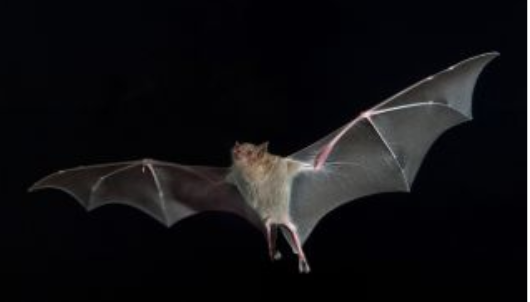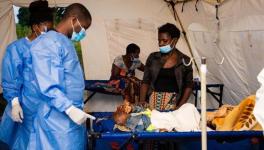How do Coronaviruses Persist in Bats Without Harming Them?

Image Courtesy: Live Science
It is well known that the novel coronavirus originated in bats. In fact, bats are natural reservoirs for a variety of coronaviruses, including SARS-CoV-2 which has caused the COVID-19 pandemic. The other deadly coronaviruses that caused global epidemics in the past were the SARS and MERS coronaviruses.
Interestingly, coronaviruses reside in bats for long, but do not cause fatalities as they do with humans. Why do bats not fall prey to the virus? Does the bat learn how to give shelter to the virus inside it without getting harmed? Or, is there a mutual relationship between bat cells and the coronavirus that lead to co-existence? These are intriguing questions and it is important to know the dynamics of the virus when it spills over to humans.
Addressing these questions, a team of researchers have published their findings in the section titled Scientific Reports of the science journal Nature. The paper, published on April 29, studied how MERS-CoV persists in bat cells for long while not causing significant damage to the host creature.
During the course of the study, the researchers infected cells of the brown bat with MERS-CoV, and the resulting infection could persist for months. This could happen because of important adaptations from both the bat and the virus working together.
“Instead of killing bat cells as the virus does with human cells, the MERS coronavirus enters a long-term relationship with the host, maintained by the bat's unique 'super' immune system,” said Vikram Misra, an author of the study.
The research was carried out at the University of Saskatchewan, in Canada’s vaccine and infectious diseases organisation, the International Vaccine Centre (VIDO-intervac), one of the largest containment research facilities.
When the bat cells were exposed to MERS-CoV they did not produce an inflammation causing proteins, as in the case of humans, which is a sign of illness. Rather, the bat cells maintained a natural antiviral response – a function which shuts down in other species, including humans. At the same time, the MERS coronavirus also adapted to the host cells of the bat by rapidly mutating a particular gene. These adaptations together result in the virus remaining in the bat for long time while the bat remains unharmed.
Another interesting fact has also surfaced due to the study. The delicate balance between the host bat cells and the virus can be upset when the bat is exposed to another stress agent like a fungal infection or another disease. In such a situation, the coronavirus can cause damage to the bat as well. The information could be a lead on how the virus may spill over from its natural host to other species and how it readily adapts.
“We see that the MERS coronavirus can very quickly adapt itself to a particular niche, and although we do not completely understand what is going on, this demonstrates how coronaviruses are able to jump from species to species so effortlessly,” Darryl Falzarano, a co-author of the study and a lead scientist in the VIDO-Intervac’s effort to develop a vaccine against COVID-19, was quoted saying.
As the next step of their research, the team plans on exploring how the bat-borne MERS coronavirus adapts to infection and replication in camels and human cells.
Get the latest reports & analysis with people's perspective on Protests, movements & deep analytical videos, discussions of the current affairs in your Telegram app. Subscribe to NewsClick's Telegram channel & get Real-Time updates on stories, as they get published on our website.
























